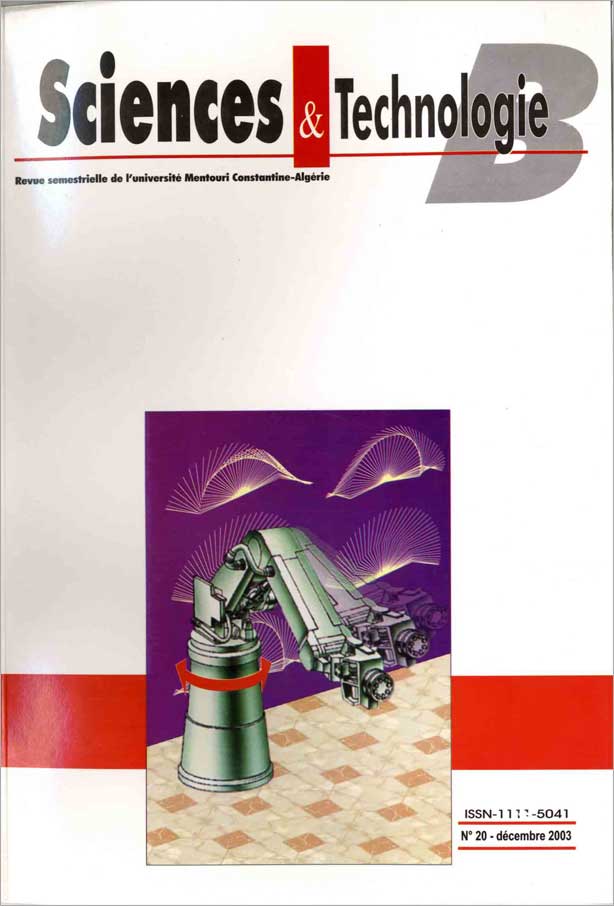ADAPTIVE TRACKING OF MULTIPLE MANOEUVRING TARGETS IN CLUTTER USING THE IMM AND THE JPDAF
Mots-clés :
Radar, Tracking manoeuvring targets, Data association, Variable update time, IMM, JPDAFRésumé
An algorithm for tracking multiple manoeuvring targets in a cluttered environment is proposed. This algorithm combines the Joint Probability Data Association Filter (JPDAF) and the interacting Multiple Model (IMM) algorithm and uses an adaptive update time. A modified version of the Van Keuk method has been used to adaptively calculate the update time in the resulting algorithm, called the Adaptive IMMJPDAF (AIMMJPDAF). The performance of the proposed algorithm is assessed via Monte Carlo simulation and compared to that of the adaptive IMMJPDAF that uses the original Van Keuk method and the IMMJPDAF that uses a constant update time.
Références
- Reid D.B., "An algorithm for tracking multiple targets", IEEE Trans. Automatic Control, vol. 24, (1979), pp. 843-854.
- Castella F.R., "An adaptive two dimensional Kalman tracking filter", IEEE Trans. Aerospace and Electronic Systems, Vol. 16, (1980), pp. 822-829.
- Bar Shalom Y. and Birmiwal K., "Variable dimension filter for manoeuvring targets tracking", IEEE Trans. Aerospace and Electronic Systems, Vol. 18, (1982), pp. 621-629.
- Woolfson M.S., "An evaluation of manoeuvre detector algorithms", GEC Journal of Research , Vol. 3, (1985), pp. 181-190.
- Bar Shalom Y. and Li X.R., "Estimation and tracking : principles, techniques and software", Artech House, Inc., (1993), pp 222-228.
- Y. Bar Shalom Y. and Fortmann T.E., "Tracking and data association", Academic Press, (1988).
- Ahmeda S.S., Keche M., Harrison I. and Woolfson M.S., "Adaptive joint probabilistic data association algorithm for tracking multiple targets in cluttered environment" , IEE Proc Radar, Sonar and Navigation, Vol. 144, (1997), pp. 309-314.
- Van Keuk G., "Adaptive computer controlled target tracking with a phased array radar", IEEE International Radar conference, April (1977), pp. 429-434.
- Fitzgerald R.J., "Development of practical PDA logic for multi-target tracking by microprocessor", In Proc. of the American Controls Conference, Seattle, Wash., (1986), pp. 889-898.
- Benoudnine H., Keche M., Ouamri A., Woolfson M.S. and Harrison I., "AIMMJPDAF algorithm for tracking multiple manoeuvring targets in a cluttered environment", IASTED International Conference on Modelling, Identification and Control, Austria, February (1999).
- Benoudnine H., Keche M., Ouamri A., Woolfson M.S. and Harrison I., "Improved Adaptive IMMJPDAF algorithm for tracking multiple manoeuvring targets in a cluttered environment", RADAR99, International Conference on RADAR Systems, Brest, 17-21 Mai (1999).
- Keche M., Woolfson M.S., Harrison I., Ouamri A. and Ahmeda S.S., "Improved adaptive joint probabilistic data association filter for multiple targets angles tracking", Electronics Letters, Vol. 33, (1997), pp. 1361-1362.
- Hong L., "Multirate Interacting Multiple Model Filtering for Target Tracking Using Multirate Models", IEEE Transactions on Automatic Control, vol. 44, (1999), pp. 1326-1340.
Téléchargements
Publié-e
Comment citer
Numéro
Rubrique
Licence
Les auteurs publiant dans cette revue acceptent les termes suivants :- Les auteurs détiennent le droit d'auteurs et accordent à la revue
le droit de première publication, avec l’ouvrage disponible simultanément [SPÉCIFIER LA PÉRIODE DE TEMPS] après publication, sous la licence Licence d’attribution Creative Commons qui permet à d'autres de partager l'ouvrage en en reconnaissant la paternité et la publication initiale dans cette revue. - Les auteurs peuvent conclure des ententes contractuelles additionnelles et séparées pour la diffusion non exclusive de la version imprimée de l'ouvrage par la revue (par ex., le dépôt institutionnel ou la publication dans un livre), accompagné d'une mention reconnaissant sa publication initiale dans cette revue.
- Les auteurs ont le droit et sont encouragés à publier leur ouvrage en ligne (par ex., dans un dépôt institutionnel ou sur le site Web d'une institution) avant et pendant le processus de soumission, car cela peut mener à des échanges fructueux ainsi qu'à un nombre plus important, plus rapidement, de références à l’ouvrage publié (Consulter The Effect of Open Access).


